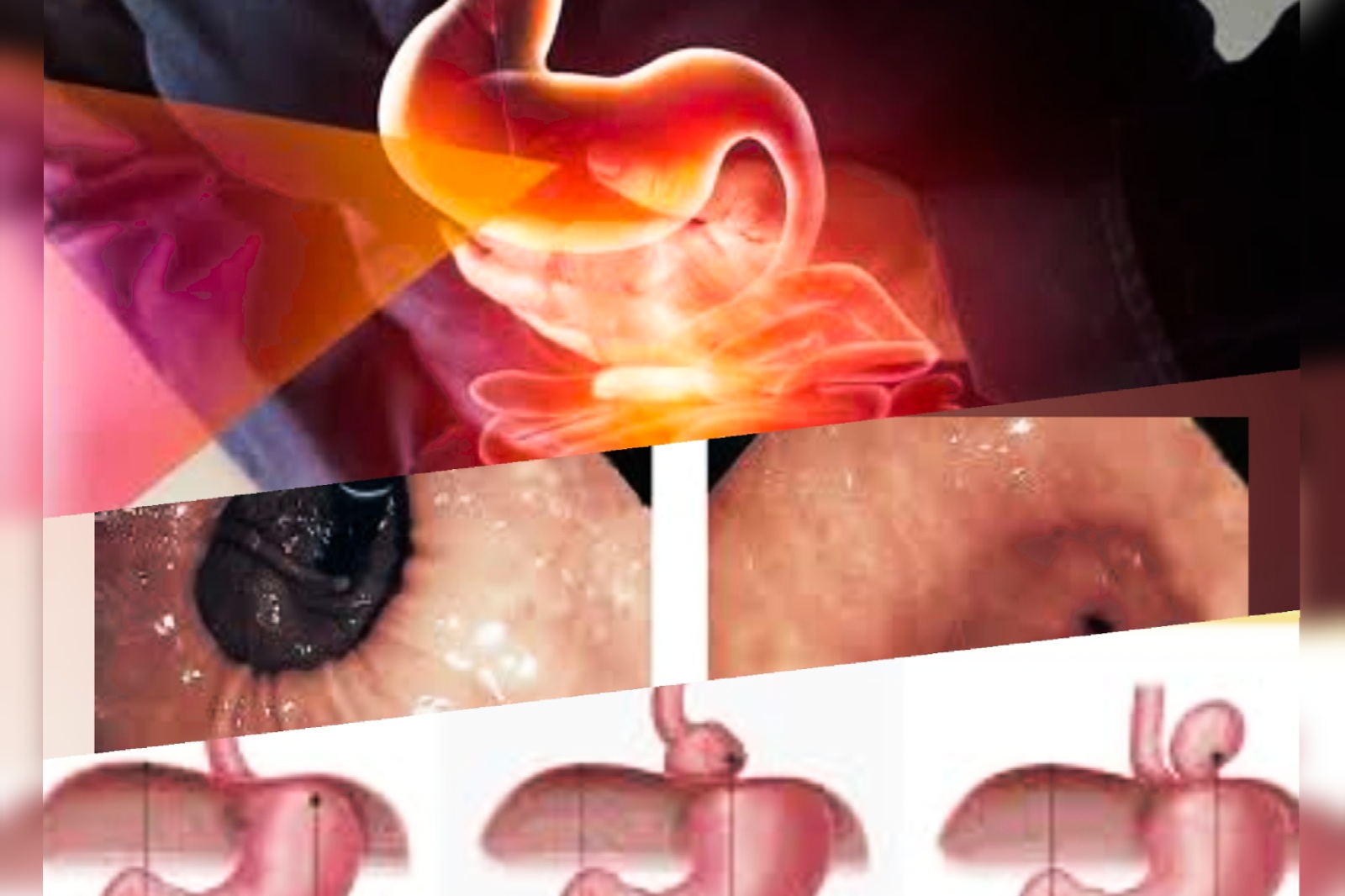-

Hiatal Hernia
A sizable muscle called the diaphragm separates your chest cavity from your abdomen. When breathing, this muscle is helpful. Normally, your stomach is located below the diaphragm, but in the event of a hiatal hernia, part of the stomach bulges and pushes through the diaphragm muscle. A hiatus is the opening that permits this to occur. A hiatal hernia is thought to be more likely to occur between the ages of 50 and 60.
Hiatal Hernia Types
It is classified into two types:
-
Sliding hiatal hernia
When your stomach and esophagus slide into and out of your chest, a sliding hiatal hernia develops, which typically has a small size. These hernias don't need to be treated.
-
Fixed hiatal hernia
This type of hernia is also referred to as a paraesophageal hernia. It is a rare type of hiatal hernia. Your stomach's blood supply may become obstructed in such circumstances. This is a medical emergency because it has the potential to cause severe harm.
Hiatal Hernia Symptoms
-
Belching
-
Chest pain
-
Difficulty in swallowing
-
Heart burns when you lie over
-
Food or liquids coming back up into the mouth
-
Backflow of stomach acid into the esophagus (acid reflux)
-
Difficulty swallowing
-
Chest or abdominal pain
-
Feeling full soon after you eat
-
Shortness of breath
-
Vomiting in blood or passing black stools
Hiatal Hernia Risk Factors
-
Increasing age
-
Obesity
-
Stress
-
Heavy lifting
-
Smoking
Hiatal Hernia Diet
A diet is a crucial factor in reducing the symptoms of hiatal hernia. The foods that have the potential to produce acid in your stomach need to be avoided, such as onions, garlic, alcohol, spicy foods, fried foods, tomatoes, coffee, etc.
Still, a lot of healthy foods exist that won't cause your stomach to become overly acidic. For instance, many whole foods are advantageous because they are unprocessed, such as non-citrus fruits (apple, pears, melons, and berries), vegetables (carrots, sweet potatoes, asparagus, squash, green beans, leafy greens, and peas), whole grains, dry fruits, etc.
Hiatal Hernia Diagnosis
A hiatal hernia is frequently found during a test or procedure to identify the root of chest pain, upper abdominal pain, or heartburn. These tests or procedures include:
-
X-ray of your upper digestive system
You are given a chalky liquid to drink, which coats and fills the interior lining of your digestive tract, and then X-rays are taken. The coating makes your esophagus, stomach, and upper intestine silhouettes visible to your doctor.
-
Upper endoscopy
Your doctor will examine the inside of your esophagus and stomach and check for inflammation using an endoscope, a small, flexible tube with a light and camera.
-
Oesophagal manometry.
The esophageal muscle contractions that occur when you swallow are measured by this test. The coordination and force of the muscles in your esophagus are also measured by esophageal manometry.
Hiatus hernia is the herniation of part or all of the stomach through the diaphragm. It may be axial/sliding, paraesophageal or mixed. The hernia is classified based on the level of herniation and the contents.
Most patients are asymptomatic. Patients with a sliding hernia may present with symptoms of dyspepsia due to gastro-esophageal reflux. Paraesophageal hernias may cause dyspnea or palpitations. However some patients with paraesophageal hernias present acutely with acute upper gastrointestinal hemorrhage, strangulation, infarction or perforation of the intrathoracic stomach.
Endoscopy and CT scan will help in diagnosis and planning treatment surgical plan.
-
-
Surgery
There are two types of surgeries that are offered for patients suffering from incisional hernia. Open hernia repair with mesh and the other most common type of surgery is Laparoscopic hernia repair with mesh. Broadly these surgeries based on the technique can be classified as OPEN SURGERY and MINIMALLY INVASIVE SURGERY.
OPEN SURGERY- Open Nissen fundoplication repair with or without mesh
Open surgery involves open technique. Here an incision is made on the abdomen. The area of the stomach and esophagus is identified. If there is a hernia the hernia is reduced. The esophagus is mobilized to obtain adequate intra abdominal length. The lower esophageal opening in the diaphragm is evaluated and the cura is approximated over a bougie. The stomach is then wrapped around the mobilized esophagus to recreate the valve to prevent reflux. The surrounding structures are evaluated and the incision is closed.
Open surgery is usually more painful than the minimally invasive surgeries. But there are various medications that we use to help you have better pain control.
For this surgery you may need a complete blood count (CBC), chemistry profile, PT, PTT. Depending on your medical history, we may require additional testing: chest X-Ray, EKG, medical clearance from your primary care physician, cardiac clearance from your cardiologist, additional blood work and finally Anesthesiology clearance.
We recommend that you have your blood work done before having the surgery performed. If this is not possible, please notify the surgical scheduling team at 8884200030.
MINIMALLY INVASIVE SURGERY- Laparoscopic Nissen fundoplication with or without mesh
Laparoscopic surgery involves minimally invasive technique. Here we make small 5 mm incisions on the upper right and left side of the abdomen and small 10 mm incisions are also made. The abdomen is entered and the area of the stomach and esophagus is identified. If there is a hernia the hernia is reduced. The esophagus is mobilized to obtain adequate intra abdominal length. The lower esophageal opening in the diaphragm is evaluated and the cura is approximated over a bougie. The stomach is then wrapped around the mobilized esophagus to recreate the valve to prevent reflux. The surrounding structures are evaluated and the incision is closed.
Laparoscopic surgeries are usually less painful than the open surgeries. We still give you pain medications and nerve blocks so that you feel comfortable and are able to walk about six hours after the surgery.
For this surgery you may need a complete blood count (CBC), chemistry profile, PT, PTT. Depending on your medical history, your physician may require additional testing: chest X-Ray, EKG, medical clearance from your primary care physician, cardiac clearance from your cardiologist, additional blood work and finally Anesthesiology clearance.
We recommend that you have your blood work done before having the surgery performed. If this is not possible, please notify the surgical scheduling team at 8884200030.
-
Patient education
BEFORE SURGERY
Please refer to the instructions below in preparation for your surgery. Proper preparation is essential to obtain the best surgical experience and results. Please note that failure to follow these instructions may result in rescheduling your surgery. Our team will contact each patient directly and will be available to answer any additional questions about surgery, scheduling and instructions.
PRE-OPERATIVE TESTING
You may need a complete blood count (CBC), chemistry profile, PT, PTT. Depending on your medical history, your physician may require additional testing: chest X-Ray, EKG, medical clearance from your primary care physician, cardiac clearance from your cardiologist, blood work and anesthesiology clearance.
We recommend that you have your blood work done at the hospital where you are having the surgery performed.
Please download instructions below if you need any further instructions, please notify the surgical scheduling team at 8884200030.
-
why us?
Hiatal hernias require surgery to be repaired. Pulling your stomach into your abdomen, constricting the opening in your diaphragm, or replacing your esophageal sphincter may be necessary during surgery for hiatal hernia repair.
In general, surgery may be performed using a single incision in your chest wall (thoracotomy) or using a minimally invasive technique called laparoscopy. Choose MH Surgery as our specialists are experienced and perform highly advanced surgeries. If you experience any symptoms, please consult a ventral hernia surgeon or book an appointment with us.
Our minimally invasive Surgeons are well known internationally in their field. They are experts in the diagnosis and management of various conditions, and innovation of minimally invasive surgery techniques. Our team provides a personalized approach for each patient, offering advanced surgical solutions. Our surgeons educate physicians on innovative techniques through national,international presentations and web-based seminars.

